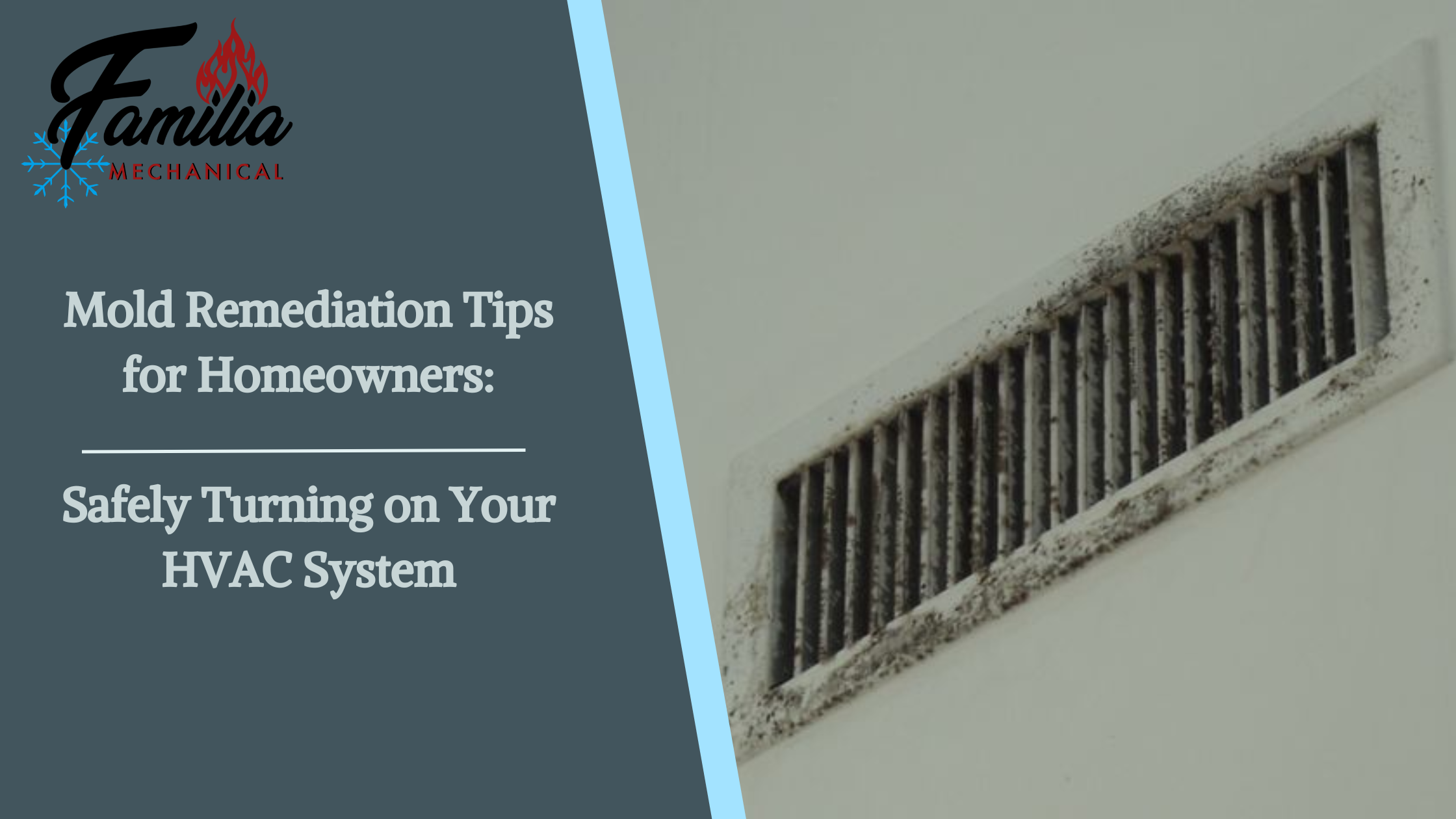Mold Remediation Tips for Homeowners: Safely Turning on Your HVAC System
After mold treatment in your home, ensuring the safe operation of your HVAC system is crucial for maintaining a healthy indoor environment. Here are some expert tips to assist homeowners in safely turning on their HVAC system post-mold remediation:
Assess the Need for Replacement: If mold infestation was severe or prolonged within the HVAC system, replacement might be necessary. Consult with a professional HVAC technician to evaluate the extent of the damage and determine if replacement is warranted.
Replace Air Filters: It’s essential to replace air filters after mold treatment to prevent recontamination. Opt for high-quality HEPA filters designed to capture even the smallest mold spores and other contaminants effectively.
Inspect Ductwork for Mold: Before turning on the HVAC system, visually inspect the ductwork for any signs of mold growth. Use a flashlight to check inside ducts and vents thoroughly. If mold is detected, contact a professional mold remediation service to address the issue promptly.
Schedule Professional HVAC Inspection: Consider scheduling a comprehensive inspection by a licensed HVAC technician. They can conduct a thorough examination of the entire system, including ductwork, coils, and air handlers, to ensure it's free from mold contamination and operating efficiently.
Maintain Proper Ventilation: Proper ventilation is key to preventing moisture buildup and mold growth in HVAC systems. Keep vents open and unobstructed, and ensure adequate airflow throughout your home.
By following these mold remediation tips, homeowners can confidently turn on their HVAC system after treatment, knowing that their indoor air quality remains safe and healthy for their family. Remember, when in doubt, always seek professional assistance to address mold-related issues effectively.

